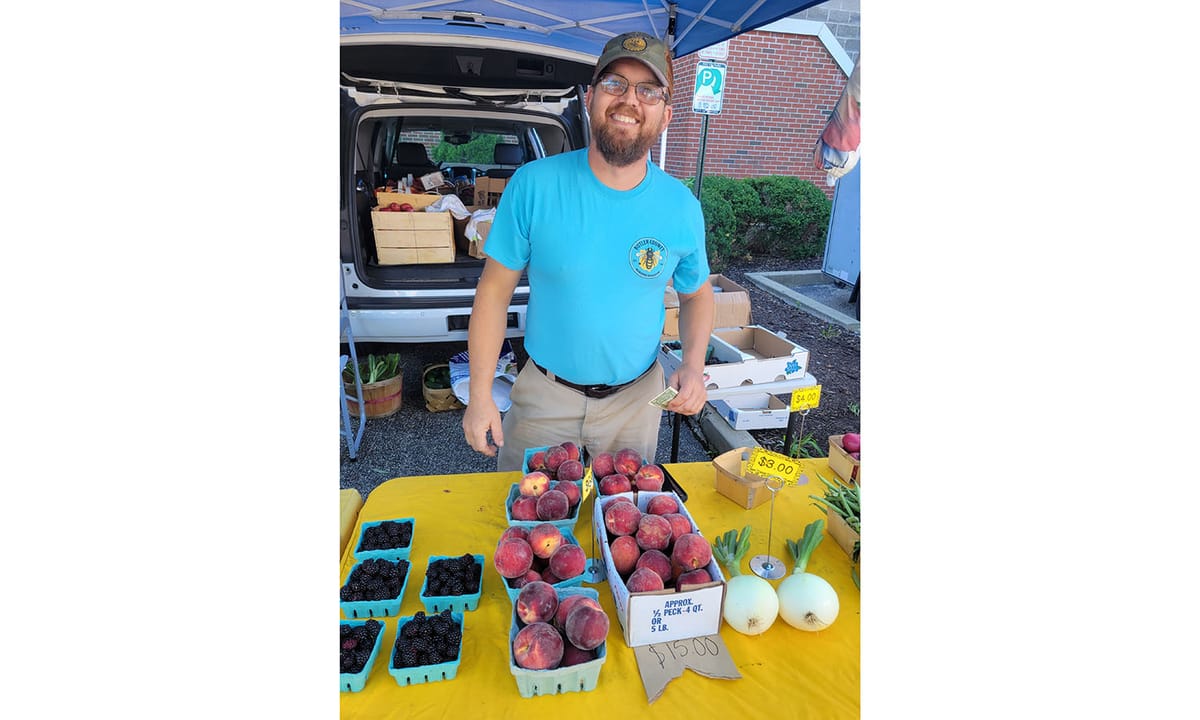Peaches are back in Oxford after string of low-yield years
After several low-yield years due to late freezes, peaches are making a comeback in Oxford. Board President James Rubenstein writes that these fruits are best enjoyed alone.

Oxford-area growers are showing up with peaches at Oxford’s Farmers Market. It looks like a good year for local peaches after several poor years. Late freezes severely limited the local peach supply during the past few years, but Downing Fruit Farms, Johnson Family Farms and other local growers are expecting more abundant harvests this year.
U.S. peach production has declined by nearly one-half in 20 years, from 1.2 million tons in 2005 to 626,000 tons in 2022. Americans are consuming fewer peaches because of dissatisfaction with supermarket selections. According to a random selection of 1,552 consumers reported in Jo Robinson’s “Eating on the Wild Side,” the most commonly used descriptions of supermarket peaches are: too soft, not sweet, not ready to eat, overripe, mealy and stringy.
The problem with supermarket peaches is easy to diagnose. More than three-fourths of U.S. peaches are grown in California and never ripen, because they are picked too early for the lengthy transport to the Midwest.
Georgia calls itself the Peach State, but in reality less than 5% of U.S. peaches come from that state according to the USDA. Several companies send trucks to our area filled with peaches from the south. These peaches do ripen into proper softness after several days and are a decent choice in late spring before local peaches become available. However, the local peaches are much softer and have a much more intense flavor than the ones trucked-in from the South.
When you bring local peaches home, keep them out on the counter. They may seem a bit hard at first, but they are near perfect ripeness, and are ready to eat in a day or two. Watch them closely and move them to the refrigerator as soon as they are soft, where they can be held for a few more days. Take some out of the refrigerator in the morning so they can be eaten at room temperature during the day.
Local growers are offering both yellow and white peaches. The local yellow peaches have generally been larger than the white ones. White peaches are said to be sweeter, whereas yellow peaches are said to be more acidic. Over the years, I haven’t tasted much difference, probably because all local peaches are so much sweeter and juicier than out-of-state ones.
Peaches come in clingstone and freestone. Clingstone peaches are said to be a bit juicier and sweeter than freestone ones. If you are eating a local peach whole, it doesn’t matter which you have. Nearly all of the unfortunate supermarket peaches are freestone, whereas commercially grown clingstones typically end up canned. If you are unsure which variety and color you prefer, local vendors at the farmers market are happy to offer you a piece.
I believe that our wonderful local peaches are too good for complicated recipes. Cut up a peach in the morning and place the pieces on top of cereal. In the evening, reverse the construction: place the cut up peach in a bowl, sprinkle with some crunchy granola, and add a couple spoonfuls of yogurt.
The best way to eat one of these luscious local peaches is over the sink, so you can wash off the juice from your face and hands.
James Rubenstein is president of the Board of Directors for the Oxford Free Press and professor emeritus of geography at Miami University.




